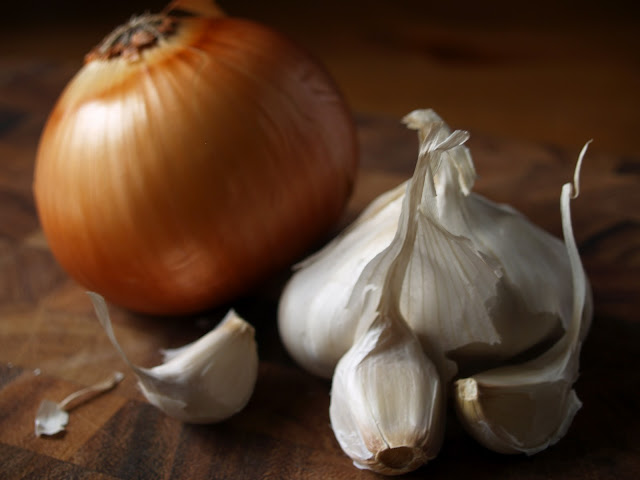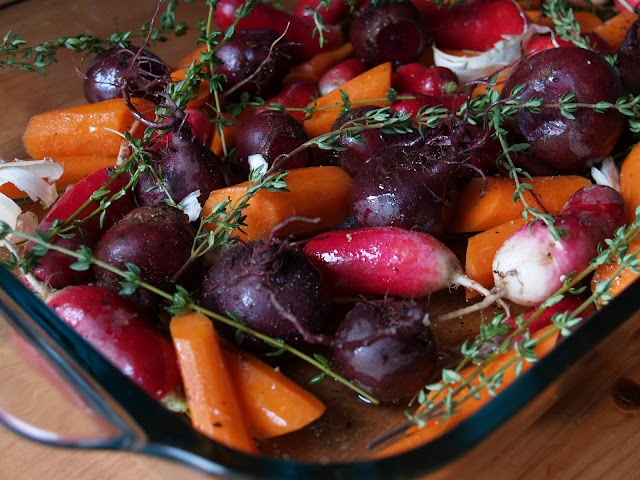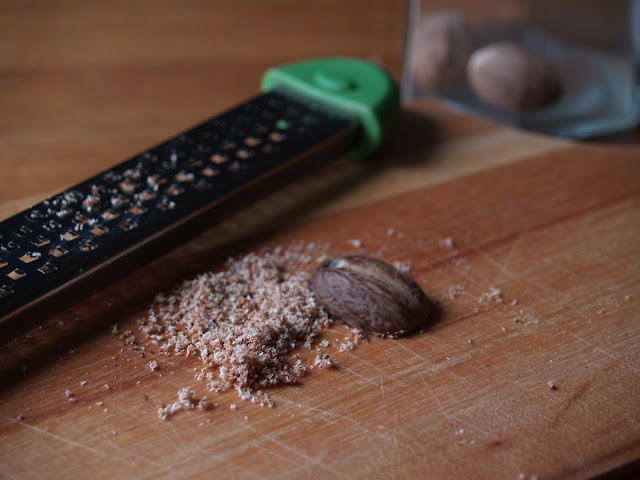This stuff is like crack and it has filled my heart (and stomach) with joy. The recipe comes from cookbook author Rori Trovato and was featured on The Barefoot Contessa. Initially, I made this ice cream because I wanted something to offset the sweetness of a coconut cake I had prepared for my birthday. Salted caramel ice cream was just the ticket, and as it turned out, the two were a perfect balance.
I think making caramel often intimidates people because of cooking sugar at high temperatures. I feel a lot of people fear they're going to get burned. But cooking with hot oil is just as dangerous as cooking with hot sugar, yet this doesn't seem too scary to most cooks. If you're fearful of making caramel, this is a good first recipe to start with. Though you're not making the actual confection itself, I think it's a simpler way to learn the basics of caramel. Cooking the sugar dry in the pan without any added water is also much faster. You don't have to wait as long for the sugar to reach the right color as you would when traditionally making caramel.
Techniques aside, I can't praise this recipe enough. The texture of this ice cream is similar to soft-serve ice cream. It's outrageously flavorful, rich, and beautifully creamy. Dare I say it's my most favorite ice cream I've made to date? I dare say it is.
SALTED
CARAMEL ICE CREAM
Recipe
courtesy Rori Trovato
Ingredients:
For
the ice cream base:
1 cup
whole milk
4 large
egg yolks
¾ cup
sugar
2 cups
heavy cream
For
the caramel:
1¼ cups
sugar (see notes below)
¾ cup
heavy cream
2 tsp.
good quality sea salt or fleur de sel
1 tbsp.
good quality vanilla extract (such as Nielsen-Massey)
To
make the ice cream base:
Heat
the milk in a saucepan over medium-low heat, but do not boil.
Prepare
an ice bath by placing a medium-sized bowl inside a larger bowl filled with ice
water. Set a strainer over the smaller bowl and set aside.
In a
separate mixing-bowl, whisk together the egg yolks and sugar until pale yellow
in color and the sugar has mostly dissolved. Gradually pour the warmed milk
into the egg mixture, whisking constantly. Pour the mixture back into the same
saucepan you used to warm the milk. Cook for 3 to 5 minutes over medium heat,
stirring constantly, or until the custard thickens and coats the back of a wooden
spoon.
Strain
the custard into the top bowl of the ice bath to stop the cooking process. Stir
in the heavy cream until the mixture is cold (this will take a few minutes).
Place a sheet of plastic wrap directly on the surface of the custard and another
sheet over the bowl. Refrigerate for several hours, preferably overnight.
To
make the caramel:
Heat
the sugar in a dry heavy-bottomed saucepan over medium heat, stirring with a
fork to heat the sugar evenly. Once the sugar begins to melt, stop stirring and
swirl the pan to ensure the sugar melts evenly. Continue cooking until the
sugar reaches a dark amber color, but not too dark as it can burn (you'll know
its burned if it becomes very dark and begins to smell badly. If this happens,
toss the sugar, clean the pan, and start again).
Carefully
add the heavy cream (avert your face because the mixture will bubble up violently)
and cook, stirring until the cream is fully incorporated. Transfer to a heatproof
bowl and stir in the sea salt. Set the caramel mixture over a bowl filled with
ice water and whisk until chilled to room temperature (this will take a few
minutes). Combine the caramel mixture with the chilled ice cream base and add
the vanilla.
Freeze
in an ice cream machine according to the manufacturer's directions. Quickly
transfer to quart containers and freeze for several hours to firm up before
serving.
Yield: about
1¼ quarts (5 cups)
Notes:
- I generally use organic or unbleached sugar, but for caramel it's easier to tell when you've reached the right amber color if using regular white refined sugar.

























































